On the land of Vietnam, 54 ethnic groups live together, united through thousands of years of history to create a close-knit community like today.
The Lo Lo ethnic group, also known as Mun Di, Di, Man Di, La La, O Man, Lu Loc Man, appeared early, contributing to the process of reclaiming and establishing the land of Dong Van, Meo Vac in Tuyen Quang province and Bao Lam, Bao Lac in Cao Bang province.
Although being one of the ethnic groups with the smallest population in Vietnam with more than 3,300 people, living intermingled with other ethnic groups for a long time, the Lo Lo people still preserve intact the traditional values of the nation.
Among them, the ancient rammed earth houses are not only a place to live but also reflect the lifestyle, thinking, and creativity of the Lo Lo people over the centuries.
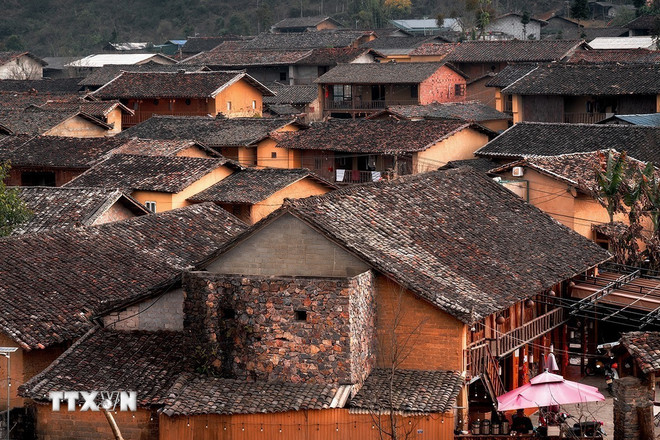
The Lo Lo ethnic group lives in separate hamlets with houses leaning against the cliffs, overlooking the valleys or fields. Like many ethnic groups living on the Dong Van stone plateau, the Lo Lo also build houses with rammed earth walls or stilt houses, with stone walls more than one meter high.
According to the concept from many generations, stone fences will prevent cold and wild animals. Although they are just stones stacked on top of each other, but with the secret family recipe, stone fences are as strong as brick walls, cannot be pushed; both aesthetic and showing the ingenuity of the people here.
From the outside, the Lo Lo house is not much different from the rammed earth houses of other ethnic groups, but when observing the arrangement and use of space inside the house, the difference is seen.
Lo Lo people’s rammed earth houses are built entirely from natural materials, mainly clay, loam and wood. This meticulous and skillful construction process not only ensures durability but also creates a comfortable living space, warm in winter and cool in summer.
The foundations are reinforced with large cobblestones, carefully stacked to ensure stability on the ground. The walls are made of fine clay, mixed with loam to increase adhesion. The soil is poured into wooden molds and tamped down with wooden mallets, creating walls 50-60cm thick.
After finishing, the wall surface is smoothed to increase aesthetics and protect against rain and wind.
The roof is usually covered with yin-yang tiles, creating harmony with the overall traditional architecture. In the past, poor families often covered it with thatched grass, but nowadays, tiles have become a more common standard.
A rammed earth house usually has three main compartments, of which the middle compartment is the central space, used to receive guests, hold ceremonies, and place the ancestral altar; the right compartment is the resting place of grandparents and parents; the left compartment is for the children in the family.
In addition, above the house there is an attic, which is used as a warehouse for storing food such as corn, potatoes, and cassava. To reach the attic, the Lo Lo people made a wooden ladder with 9 to 11 steps and avoided making stairs with an even number of steps.
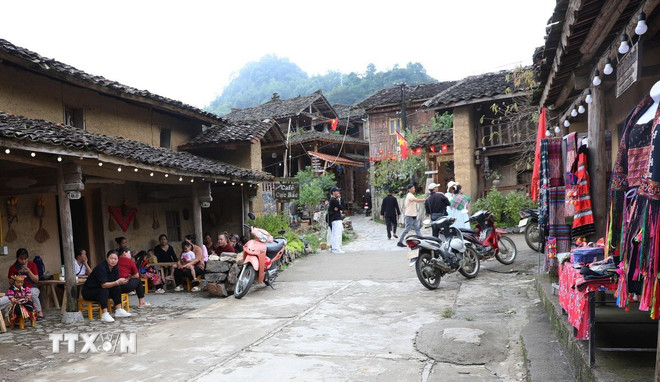
The rammed earth house has two doors: the main door in the middle room and a side door on the left, usually leading to the garden. On the doors are usually amulets with special characters and drawings on red paper, meaning to ward off evil spirits and bring peace to the family.
The rammed earth house is not only a place to live but also reflects the Lo Lo people’s way of thinking in harmony with nature. With the characteristic of “warm in winter, cool in summer,” this type of house is suitable for the harsh climate of the highlands. In addition, rammed earth houses are also the place to hold important ceremonies such as weddings, funerals, or ancestor worship ceremonies, contributing to preserving the cultural identity of the nation.
Earthen houses with yin-yang tiled roofs are not only durable over time but also bring spiritual value, demonstrating the connection between humans and nature.
This is an indispensable part of the cultural identity of the Lo Lo people, contributing to creating a peaceful and traditional scene./.
Source: https://www.vietnamplus.vn/doc-dao-nhung-ngoi-nha-trinh-tuong-cua-nguoi-dan-toc-lo-lo-post1068385.vnp






![[Photo] Closing of the 13th Conference of the 13th Party Central Committee](https://vphoto.vietnam.vn/thumb/1200x675/vietnam/resource/IMAGE/2025/10/08/1759893763535_ndo_br_a3-bnd-2504-jpg.webp)

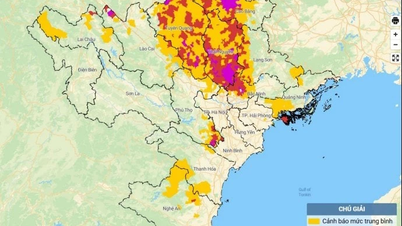

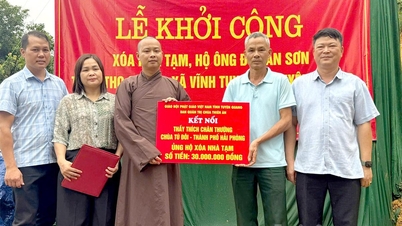




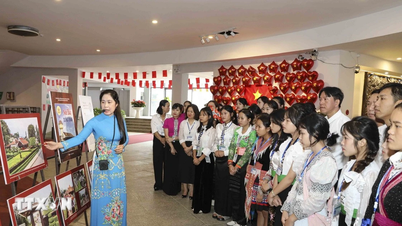





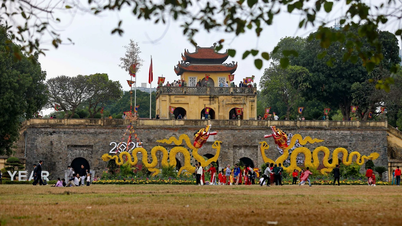


































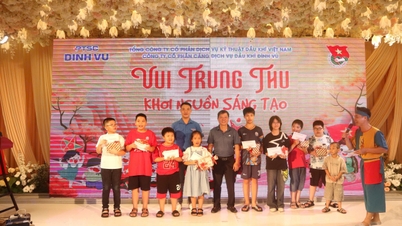
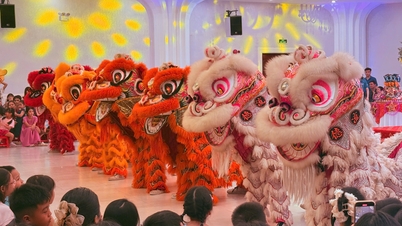










































Comment (0)